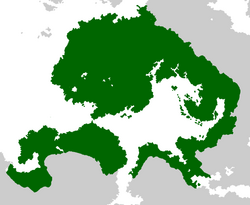Fiorentine Empire: Difference between revisions
Jump to navigation
Jump to search
mNo edit summary |
No edit summary |
||
| Line 44: | Line 44: | ||
| rowclass6 = mergedrow| data6 = {{flag|Newrey}} | | rowclass6 = mergedrow| data6 = {{flag|Newrey}} | ||
| rowclass7 = mergedrow| data7 = {{flag|Veleaz}} | | rowclass7 = mergedrow| data7 = {{flag|Veleaz}} | ||
| rowclass8 = mergedrow| data8 = {{flag| | | rowclass8 = mergedrow| data8 = {{flag|Atresca}} | ||
| rowclass9 = mergedrow| data9 = {{flag|Sidi Synnia}} | | rowclass9 = mergedrow| data9 = {{flag|Sidi Synnia}} | ||
| rowclass10 = mergedrow| data10 = {{flag|Fearnafearann}} | | rowclass10 = mergedrow| data10 = {{flag|Fearnafearann}} | ||
Revision as of 21:44, 7 September 2019
This article is incomplete because it is pending further input from participants, or it is a work-in-progress by one author. Please comment on this article's talk page to share your input, comments and questions. Note: To contribute to this article, you may need to seek help from the author(s) of this page. |
Fiorentine Empire Imperium Florentinum Βασιλεία Φιορεντίνα | |
|---|---|
| 346 BCE–492 | |
 Empire at its greatest extent in 80 CE | |
| Capital | Laterna |
| Common languages | Fiorentine Ancient Myrian |
| Religion | Alydianism |
| Government | Elective Absolute monarchy |
| Emperor | |
• 346 BCE–331 BCE | Leo I |
• 490–492 | Salonius Narcissus |
| Historical era | Classical era |
• Creation of Fiorentine League | 346 BCE |
| 492 | |
| Today part of | |
The Fiorentine Empire is a name used to refer to the ancient Fiorentine civilisation which ruled over much of Asura, West Sifhar and North Arabekh.
